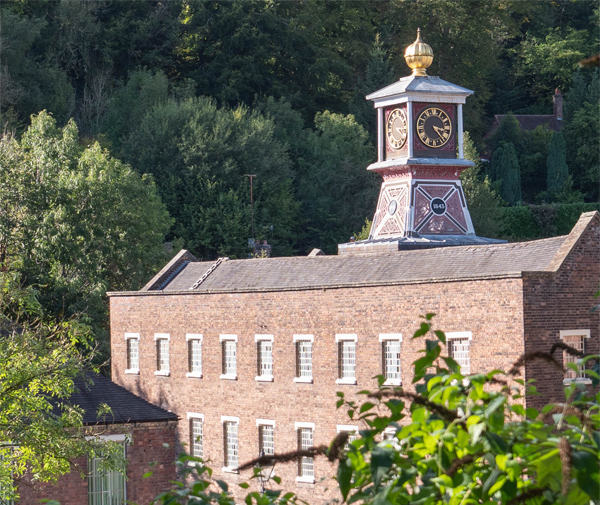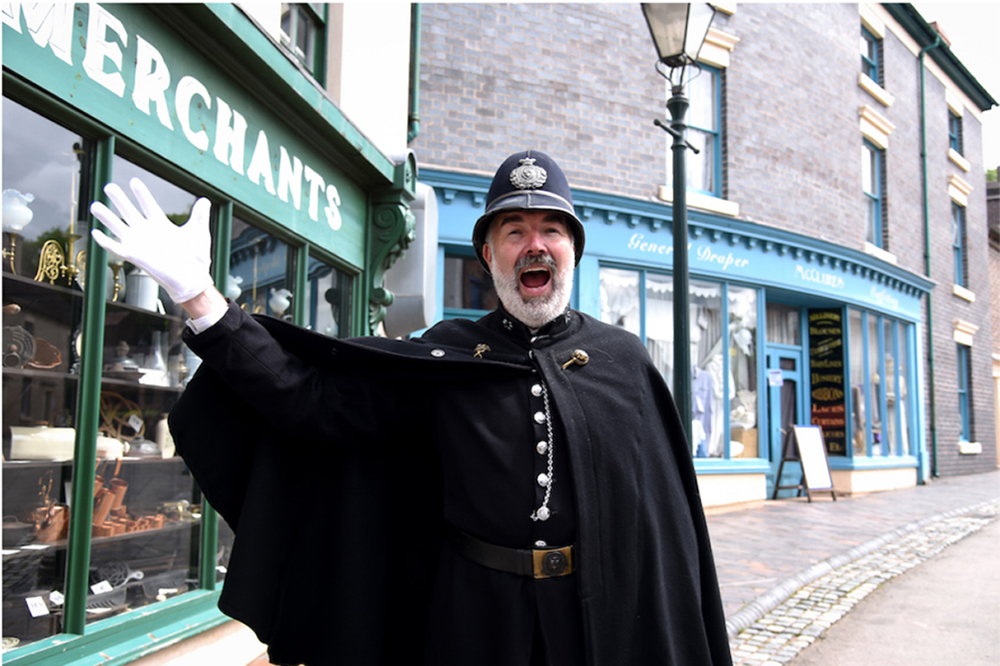

Published: Wednesday, 22 June 2022
5 Interesting Facts That You Didn’t Know About The Iron Bridge
The Iron Bridge weighing 378 tonnes and spanning 30 metres is world-renowned for representing the Industrial Revolution since its construction in 1779.
Find out why Ironbridge Gorge is of Outstanding Universal Value.
5 Interesting Facts That You Didn’t Know About The Iron Bridge
Published: Wednesday, 22 June 2022
The Iron Bridge weighing 378 tonnes and spanning 30 metres is world-renowned for representing the Industrial Revolution since its construction in 1779.
The Iron Bridge weighing 378 tonnes and spanning 30 metres is world-renowned for representing the Industrial Revolution since its construction in 1779.
The Iron Bridge sits within the vast Ironbridge Gorge which is a UNESCO World Heritage Site, made up of five areas - Coalbrookdale, Coalport, Jackfield, Ironbridge, and Madeley.
Situated in the heart of the Severn Gorge valley overlooking the River Severn, it has long been visited by local residents and tourists from around the world for the last two hundred years. But, there are a few facts that you don’t know about the Iron Bridge that may surprise you...
1. The first structure in the world made from cast-iron
The bridge is made from cast-iron using a technique that avoided burning charcoal for fuel and instead smelted iron with coke, a process first developed in 1709 by an iron master called Abraham Darby I. In later years, his grandson, Abraham Darby III, continued his legacy and funded the majority of the bridge’s construction which took two years to complete costing £6,000, which today would cost £1.5 million. Today, the Iron Bridge is owned and looked after by English Heritage and is part of the UK National Collection.
Until 1950 when the bridge changed from private to public ownership allowing free public access for pedestrians, crossing it meant everyone paid a toll, including the Royal Family. Before then, anyone who wanted to cross the bridge on foot, even animals, had to pay a toll depending on the type of animal they had as well as the type of carriage they were travelling in, such as a foot passenger paid the same toll as a calf, pig, sheep or lamb; and carriages drawn by two or four horses, mares or mules paid the same toll. A sign hanging on the side of the Toll House - a museum and gift shop operated by Ironbridge Gorge Museum Trust - next to the bridge still exists listing the original toll prices. In 1934, vehicles were stopped from crossing the bridge as it was given protection as a historical monument valued for its artistic and architectural importance.

2. Industrial Revolution centrepiece to scrap metal
The Iron Bridge was nearly lost when the then Shropshire County Council responsible for the bridge suggested that it should be pulled down and sold for scrap because there was a lot of structural damage caused by land movement in the area. The inscription on the list of UNESCO World Heritage Sites in 1986 saved the Iron Bridge and protected humanities industrial legacy. Later in 2017, English Heritage began conservation work to preserve and repair the bridge, bringing it back to its former glory. The project cost a total of £1.2 million and involved restoring the bridge’s paintwork and reinforcing it structurally.

3. Architectural design made it the last bridge standing
A local architect from Shrewsbury, Thomas Farnolls Pritchard, designed the bridge to provide safe passage over the River Severn. Because the bridge span was more than 30 metres, boats could still pass underneath the arched open structure which meant floodwaters could easily pass through leaving the bridge intact. An unfortunate flooding occurred in 1795 destroying all the bridges in the area except the Iron Bridge due to its sturdy design. Subsequently, Pritchard’s single arch design influenced many developments in the construction of other bridges such as Wearmouth Bridge, Coalport Bridge, Buildwas Bridge and Craigellachie Bridge the latter designed by Thomas Telford and the oldest of all the bridges he designed to still remain.
Between 1750 and 1830, more than 50 artists visited the bridge to document its construction at each stage of the build, but there is only one known surviving painting of the initial construction. Painted by Elias Martin, a Swedish painter, he depicted the building process starting with a wooden freestanding structure, giving an insight into the early engineering work that was involved. In 1780, after its completion, an artist called William Williams was commissioned by Abraham Darby III to draw the Iron Bridge capturing its red-brown appearance which was always assumed to be grey.

4. The World Heritage Site dates back to the Ice Age
The Iron Bridge was built in Ironbridge Gorge, thought to have been formed from a glacial lake during the Ice Age. When the ice melted and water levels rose, the lake overflowed cutting through the Gorge leaving exposed mineral deposits of coal, iron ore, limestone and different types of clay. These were eventually mined and used for developing the local area during the Industrial Revolution, which would not have happened in the speed and time it did, if not for the wealth of raw materials in the Gorge.
Geological studies have suggested that the land the Iron Bridge is built on will need constant management due to the instability of the banks, the impact from numerous landslides, mining, groundwater and surface water.
5. An unforgettable publicity stunt that would go viral today
You could say it was an early form of guerrilla marketing when the Iron Bridge was chosen as the location for Chapman’s London Zoo-Circus to promote their circus performances in 1932. The circus wanted to attract new visitors whilst touring the region so they decided to walk an elephant across the bridge wearing a promotional banner advertising their company. The elephant crossing the bridge also showed the public how strong the structure was for it to be able to hold the elephant’s weight.
Today, a steel motorised elephant is used for events happening in Ironbridge Gorge as part of an annual carnival that brings the local community together. The mechanical elephant attracts lots of attention from the public during a parade filled with dancing and music.
Another publicity stunt was when a witch flew across the River Severn in the late 1950s as a bit of fun created by the Coracle men who built the Coracle boats in the Old Coracle Shed - a community museum situated in Ironbridge Gorge.


 RSS version
RSS version